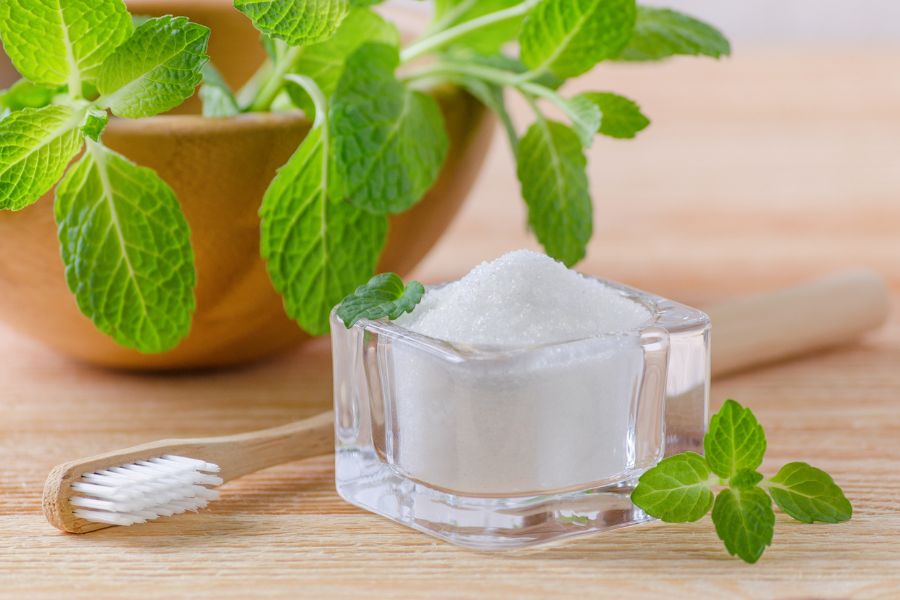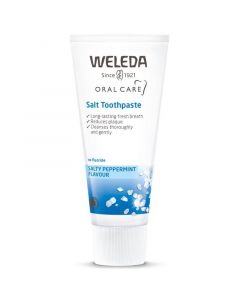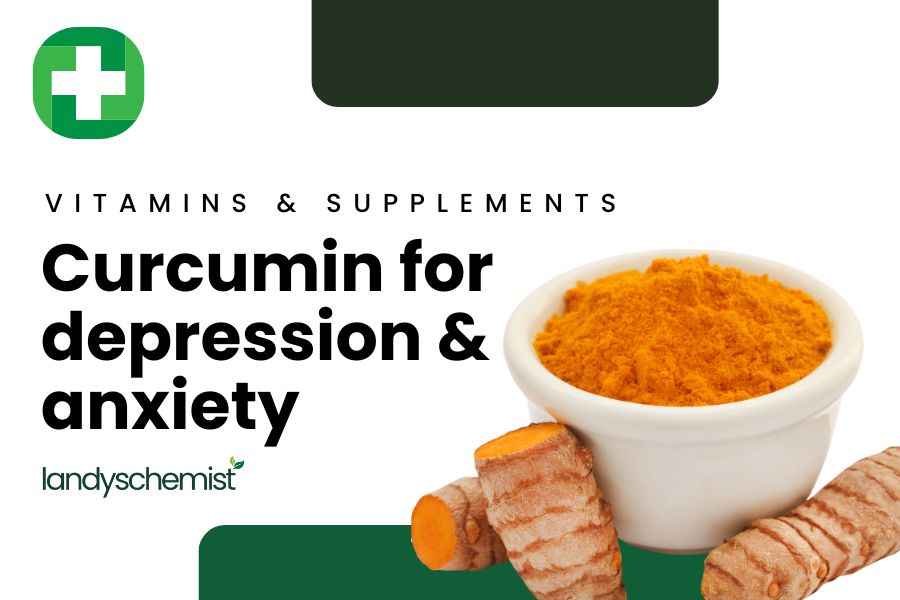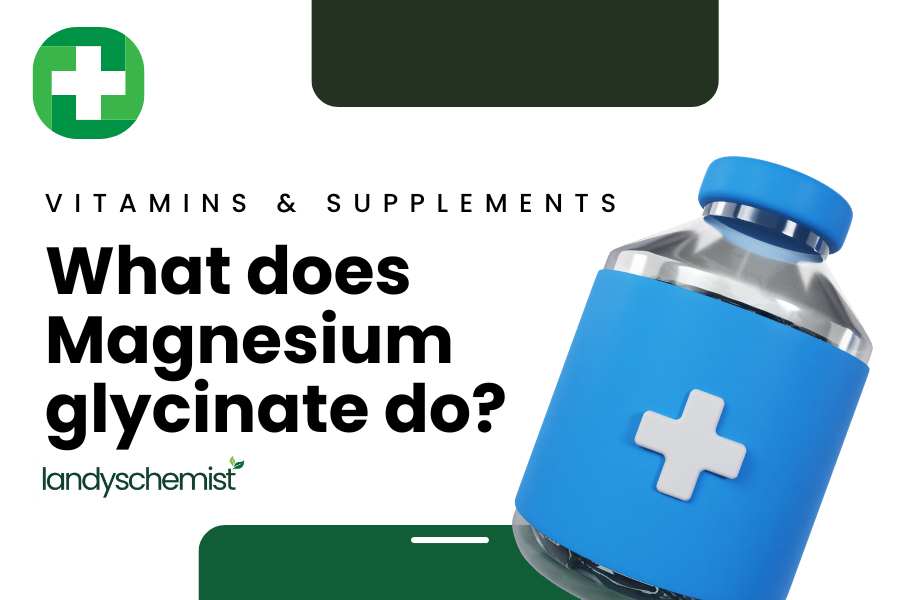
Weleda Salt Toothpaste Review: Pros and Cons
When it comes to dental hygiene, your choice of toothpaste is crucial to maintaining your oral health. Toothpaste plays a pivotal role in serving not just to clean teeth but also to protect against various dental issues such as decay, gum disease, and plaque buildup.
The most common toothpastes on the market contain fluoride, designed to prevent tooth decay and strengthen tooth enamel. However, some individuals opt for fluoride-free alternatives, with the main concern being the development of fluorosis (discolouration of the teeth)1.
This has led to the availability of a range of fluoride-free toothpastes that use alternative ingredients to support oral health, such as salt toothpaste. But is salt toothpaste good for your teeth? In this blog we explore the popular Weleda Salt Toothpaste. Since its introduction in 1973, it has become a cult classic, now selling a tube every 6 seconds, so let’s uncover real advantages and disadvantages Weleda's Salt Toothpaste based on scientific evidence.
Is Salt Toothpaste Good For Your Teeth?

Salt toothpaste focuses on natural oral hygiene practices and has anti-inflammatory properties2. The salt acts as a natural cleansing and antibacterial ingredient that may help maintain dental health. The key function of salt in oral hygiene is its ability to stimulate salivation3, which neutralises acids in the mouth, and rinses away food particles, to reduce the risk of dental erosion4 .
Salt toothpastes may also act as a natural mild abrasive which is thought to fade surface stains, however there is no scientific evidence indicating it’s teeth whitening capabilities.
What does Weleda salt toothpaste do?
Weleda Salt Toothpaste is a unique fluoride-free toothpaste that combines sea salt with gentle mineral cleansers to support the body's natural processes for cleaning teeth by stimulating salivation. The addition of salt in this formula is believed to enhance the cleaning effectiveness of its other natural ingredients including sodium bicarbonate, which neutralises harmful plaque acids and prevents the accumulation of plaque, tartar, or stains. A systematic review published in the International Journal of Dental Hygiene tested the efficacy of sodium bicarbonate against plaque and found that participants who used toothpaste with sodium bicarbonate had significantly lower plaque scores than those who didn’t5.
Other ingredients in Weleda’s salt toothpaste include soothing myrrh and ratanhia, along with horse chestnut bark extract, to support gum health 6,7,8.
The formula is fluoride-free to align with Weleda’s philosophy of using natural ingredients that work in harmony with the body's own processes for maintaining oral health. It caters to individuals seeking purely natural oral care products and for those who have concerns about using flouride toothpastes.
What is the difference between salt and fluoride toothpaste?
The primary difference between salt and fluoride toothpaste lies in their active ingredients and how they aim to improve oral health. While salt toothpaste focuses on supporting the body's natural processes for maintaining oral hygiene, fluoride toothpaste provides a direct approach to preventing tooth decay through chemical means.
This distinction makes each type of toothpaste suitable for different preferences and needs, with salt toothpaste often chosen by those looking for natural oral care options and fluoride toothpaste preferred for its proven effectiveness in cavity prevention.
Is it okay to use Weleda salt toothpaste everyday?
Using salt toothpaste daily may suit those who are at low risk for cavities and maintain good dietary and hygiene habits. However, for individuals prone to dental caries, incorporating fluoride for its proven cavity-prevention benefits is advisable9. Ultimately, the choice between salt and fluoride toothpaste should reflect your personal oral health needs and preferences, and it's best made in consultation with a dental professional to ensure a balanced and effective oral care routine.
Advantages of using Weleda Salt Toothpaste
- Natural Ingredients: Utilises sea salt and sodium bicarbonate for natural cleansing and neutralising plaque acids.
- Stimulates Salivation: Enhances the mouth's natural cleaning process by promoting increased saliva production3.
- Gum Health Support: Contains plant extracts like myrrh and ratanhia, known for their soothing and astringent properties, supporting healthy gums6,7.
- Eco-Friendly: Often preferred for its environmentally friendly and sustainable ingredients.
- Chemical-Free: Free from synthetic preservatives, flavours, colours, and fluoride, appealing to those looking to reduce their chemical exposure.
- Pleasant Flavour: Offers a unique salty taste compared to other salt toothpastes as it is complemented by peppermint, providing a refreshing alternative to conventional sweet toothpaste flavours.
Disadvantages of using Weleda Salt Toothpaste
- Lack of Fluoride to prevent cavities: Does not contain fluoride, which has been proven to prevent tooth decay and strengthen tooth enamel9.
- Acquired Taste: The salty flavour might be off-putting for some, requiring an adjustment period.
- Cost: Generally more expensive than standard fluoride toothpastes, which might not be feasible for everyone as a daily oral care product.
- Abrasion Concerns: While generally safe, there are concerns about the abrasive nature of salt potentially damaging enamel over time, especially for those with sensitive teeth10.
Directions for use:
For optimal oral health, brush your teeth twice a day with Weleda Salt Toothpaste to prevent stains and tartar accumulation. For enhanced effectiveness, apply the toothpaste to a dry toothbrush before use. Additionally, to ensure comprehensive dental care, consider alternating with a fluoride toothpaste to protect against tooth decay and strengthen tooth enamel.
Frequently Asked Questions
Can you apply salt directly to the teeth?
Some DIY remedies for teeth whitening recommend applying salt directly to the teeth, however we strongly advise against this. As the salt is not combined with the right ingredients, it can be highly abrasive, leading to possible enamel erosion.
Disclaimer
This article is for informational purposes only and is not a substitute for medical advice. Consult your doctor or healthcare provider before starting any supplements, treatments, or remedies.
References
- Fluorosis (2019) Centers for Disease Control and Prevention. Available at: https://www.cdc.gov/fluoridation/faqs/dental_fluorosis/
- Collins, J.R. et al. (2021) ‘Anti-inflammatory effect of salt water and chlorhexidine 0.12% mouthrinse after periodontal surgery: A randomized prospective clinical study’, Clinical Oral Investigations, 25(7), pp. 4349–4357. doi:10.1007/s00784-020-03748-w. https://pubmed.ncbi.nlm.nih.gov/33389135/
- NEYRAUD, E., PRINZ, J. and DRANSFIELD, E. (2003) ‘NaCl and sugar release, salivation and taste during mastication of salted chewing gum’, Physiology & Behavior, 79(4–5), pp. 731–737. doi:10.1016/s0031-9384(03)00187-2. https://pubmed.ncbi.nlm.nih.gov/12954416/
- Buzalaf, M.A., Hannas, A.R. and Kato, M.T. (2012) ‘Saliva and dental erosion’, Journal of Applied Oral Science, 20(5), pp. 493–502. doi:10.1590/s1678-77572012000500001. https://www.ncbi.nlm.nih.gov/pmc/articles/PMC3881791/
- Valkenburg, C. et al. (2019) ‘The efficacy of baking soda dentifrice in controlling plaque and gingivitis: A systematic review’, International Journal of Dental Hygiene, 17(2), pp. 99–116. doi:10.1111/idh.12390. https://www.ncbi.nlm.nih.gov/pmc/articles/PMC6850485/
- ALHarthi, S.S. et al. (2021) ‘Myrrh mixed with silver nanoparticles demonstrates superior antimicrobial activity against porphyromonas gingivalis compared to Myrrh and silver nanoparticles alone’, The Saudi Dental Journal, 33(8), pp. 890–896. doi:10.1016/j.sdentj.2021.09.009. https://www.ncbi.nlm.nih.gov/pmc/articles/PMC8665180/
- Tiemann, P., Toelg, M. and Ramos F., M.H. (2007) ‘Administration of ratanhia-based herbal oral care products for the prophylaxis of oral mucositis in cancer chemotherapy patients: A clinical trial’, Evidence-Based Complementary and Alternative Medicine, 4(3), pp. 361–366. doi:10.1093/ecam/nel070. https://www.ncbi.nlm.nih.gov/pmc/articles/PMC1978231/
- Kim, S.E. et al. (2017) ‘Efficacy of horse chestnut leaf extract alh-L1005 as a matrix metalloproteinase inhibitor in ligature-induced periodontitis in canine model’, Journal of Veterinary Science, 18(2), p. 245. doi:10.4142/jvs.2017.18.2.245. https://www.ncbi.nlm.nih.gov/pmc/articles/PMC5489472/
- dos Santos, A.P., Nadanovsky, P. and de Oliveira, B.H. (2012) ‘A systematic review and meta‐analysis of the effects of fluoride toothpastes on the prevention of dental caries in the primary dentition of preschool children’, Community Dentistry and Oral Epidemiology, 41(1), pp. 1–12. doi:10.1111/j.1600-0528.2012.00708.x. https://pubmed.ncbi.nlm.nih.gov/22882502/
- Granderland Dental (2024) Can I use salt to brush my teeth?, Grangerland. Available at: https://www.grangerlanddental.com/can-i-use-salt-to-brush-my-teeth/
By Rhysa Phommachanh, BA (hons) Specialist Hair and Media Make-up - With a focus on blending health and natural beauty, I critically assess the advantages and potential downsides of using salt toothpaste in daily oral care drawing from scientific research.






